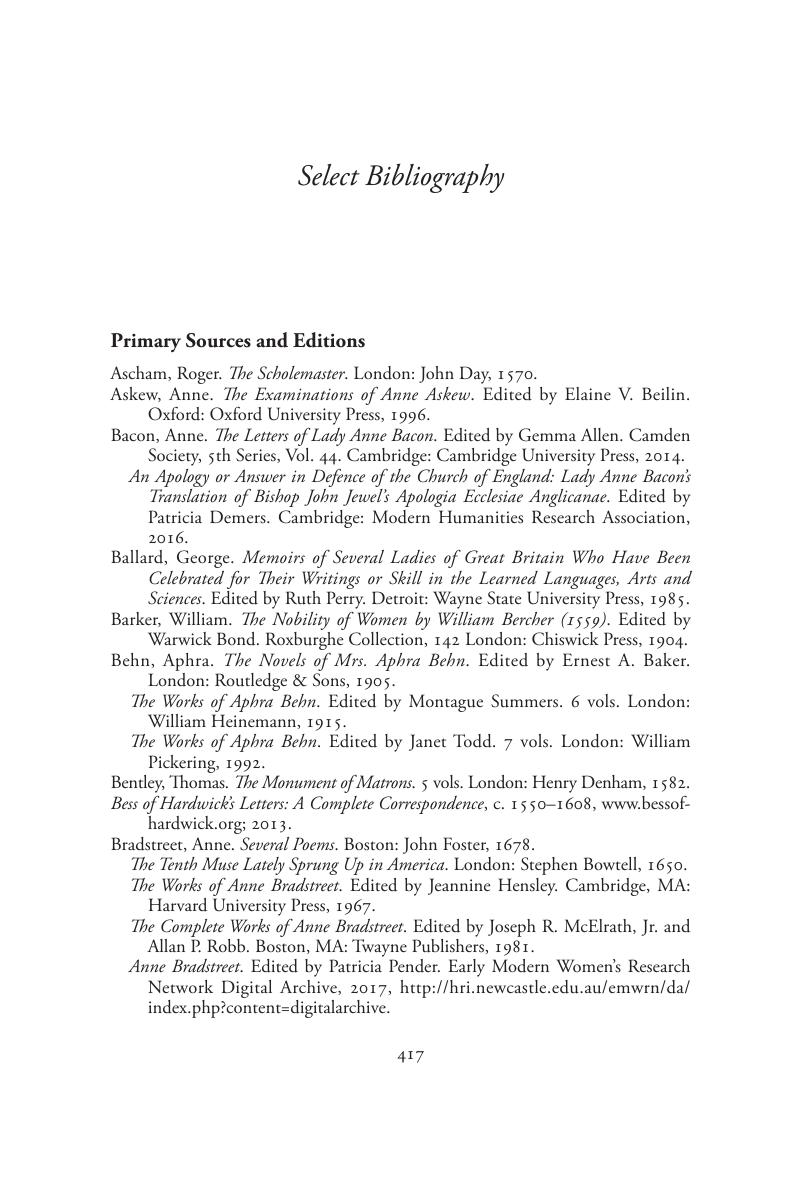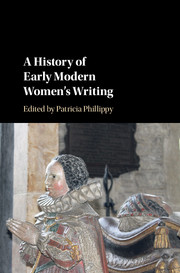Book contents
- A History of Early Modern Women's Writing
- A History of Early Modern Women's Writing
- Copyright page
- Contents
- Figures
- Contributors
- Acknowledgments
- Abbreviations
- Introduction
- Part I Critical Approaches and Methodologies
- Part II The Tudor Era (1526–1603)
- Part III The Early Stuart Period (1603–1642)
- Part IV The English Civil War, Interregnum, and Restoration (1642–1676)
- Select Bibliography
- Index
- References
Select Bibliography
Published online by Cambridge University Press: 12 January 2018
- A History of Early Modern Women's Writing
- A History of Early Modern Women's Writing
- Copyright page
- Contents
- Figures
- Contributors
- Acknowledgments
- Abbreviations
- Introduction
- Part I Critical Approaches and Methodologies
- Part II The Tudor Era (1526–1603)
- Part III The Early Stuart Period (1603–1642)
- Part IV The English Civil War, Interregnum, and Restoration (1642–1676)
- Select Bibliography
- Index
- References
Summary

- Type
- Chapter
- Information
- A History of Early Modern Women's Writing , pp. 417 - 436Publisher: Cambridge University PressPrint publication year: 2018



